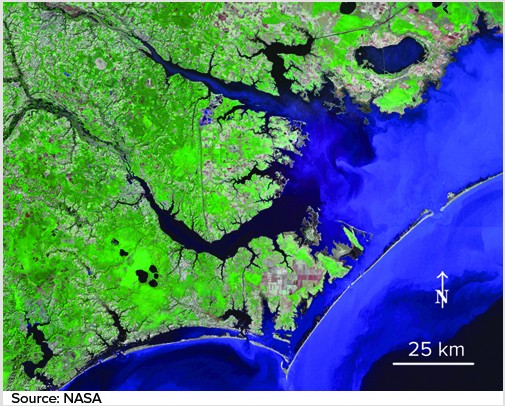The image shows a coastline that
A. has emerged as relative sea level has fallen.
B. has no sheltered bays or inlets.
C. has undergone a rise in relative sea level.
D. is marked by exposed land that was recently below sea level.
Answer: C
You might also like to view...
What property of carbon allows for the formation of so many different organic molecules?
A. Carbon resides in the exact middle of the periodic table, from left to right, with exactly the same number of reactive elements on either side of it. It can therefore react with the maximum number of elements. B. Carbon atoms are unique in their ability to form strong chemical bonds repeatedly with other carbon atoms, which permits the formation of countless possible structures. C. Carbon forms three different isotopes which allows for the formation of many more molecules than other elements. D. Carbon atoms uniquely contain exactly the same number (six) of protons, neutrons, and electrons in their atomic structure.
Which sequence of minerals is NOT written in the proper order of crystallization as predicted by Bowen's reaction series?
a. olivine-augite-hornblende b. muscovite-quartz c. sodic plagioclase-calcic plagioclase d. calcic plagioclase-sodic plagioclase
During the afternoon, the greatest temperature difference between surface air and the air several meters above occurs on a
a. ?clear, calm afternoon. b. ?clear, windy afternoon. c. ?cloudy, calm afternoon. d. ?cloudy, windy afternoon. e. ?cold, windy afternoon.
Sophisticated climate models forecast a strong warming of ________
A) high northern latitudes B) low northern latitudes C) low southern latitudes D) middle latitudes E) tropical latitudes